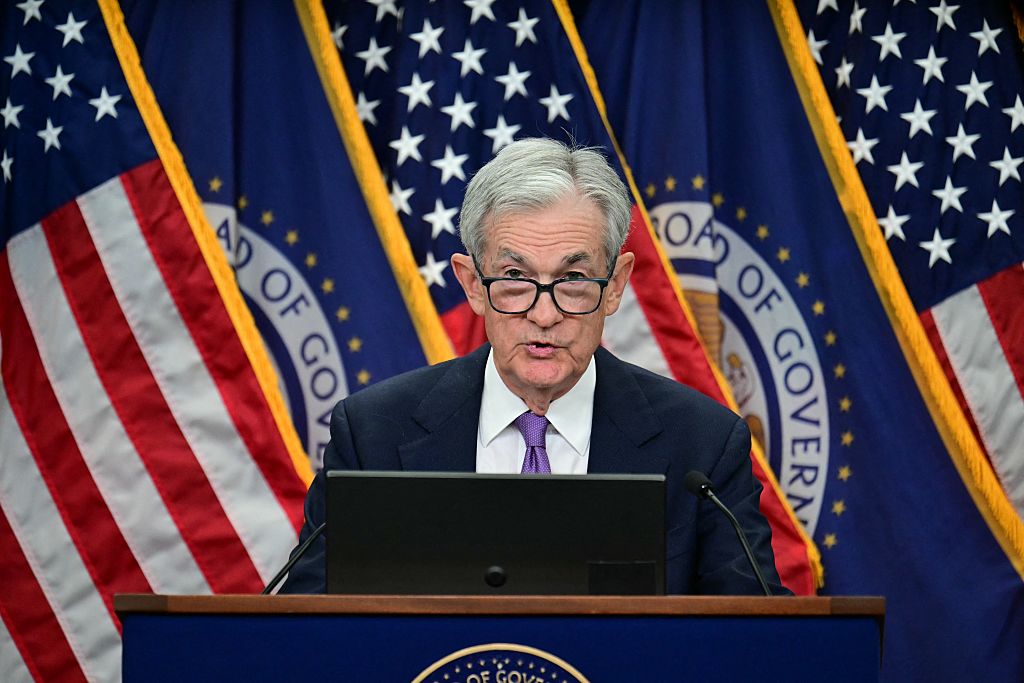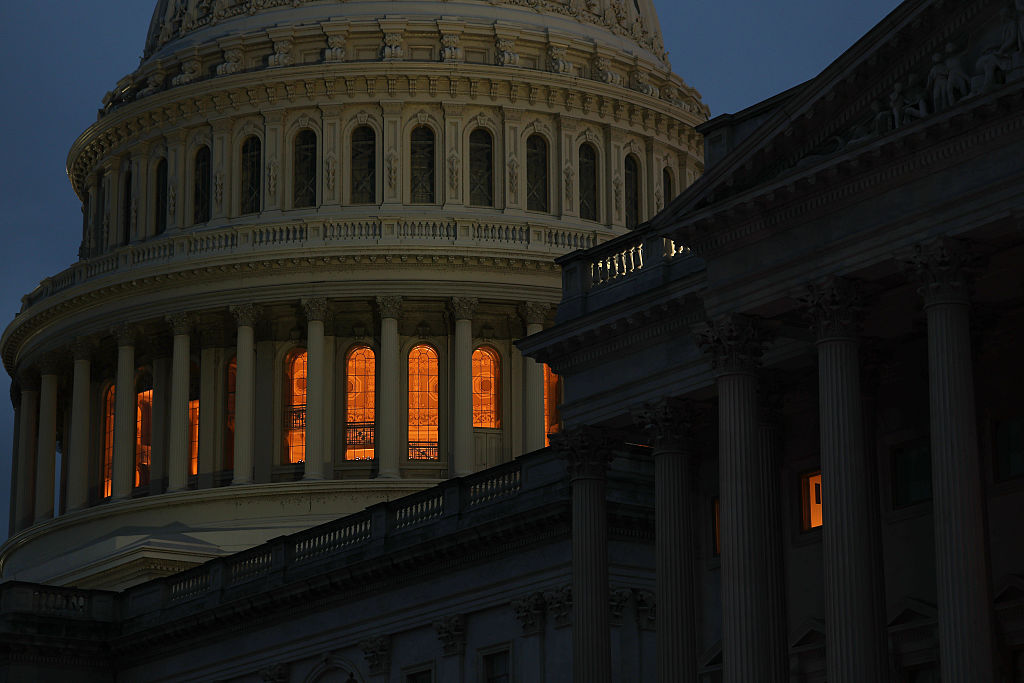10 High-Yield Funds to Avoid
We've all heard that the Federal Reserve is considering a December hike in interest rates, which would be the third bump in 2017.


We've all heard that the Federal Reserve is considering a December hike in interest rates, which would be the third bump in 2017. If and when it does increase rates, the new target would be a mere 1.5%. For many investors, bonds yielding that much simply don't provide enough income, especially when inflation is tracking around 2%.
The extremely low-interest-rate environment has meant CDs aren't worth the time, and old-fashioned Treasury bonds aren't much help in getting investors any closer to a comfortable retirement. Meanwhile, sky-high prices for many dividend stocks have caused their yields to fall, too – leading investors to look at more exotic alternatives, such as high-yield funds, to get more cash flow from their nest egg.
There's just one problem: Many of these funds are unstable, with several slashing their payouts regularly and seeing big price drops as a result. While some funds are great, many are "yield traps" that lure investors in with the siren song of an appealing headline dividend yield, but disappoint after the "buy" button has been pressed.
Here are 10 high-yield funds that have gotten a lot more popular – and dangerous – in recent years.
Data is as of Oct. 13, 2017. Click on symbol links in each slide for current share prices and more. Yields represent the trailing 12-month yield, which is a standard measure for equity funds.

iShares iBoxx $ High Yield Corporate Bond ETF
- Symbol: HYG
- Share price: $88.33
- Market value: $20.2 billion
- SEC yield: 4.6%*
- Expenses: 0.49%, or $49 annually on a $10,000 investment
Our first stop in the income hall of shame is the iShares iBoxx $ High Yield Corporate Bond ETF. It isn't just the name that's unwieldy – its assets are awkward, too.
High-yield bonds are a notorious haven for the income-starved. Sometimes called "speculative credit," these assets are probably best represented by their other nickname: junk bonds. They're "junk" because they're more prone to defaults, and their issuing companies are more prone to bankruptcies. In fact, in 2016, almost 5% of these bonds ended in one kind of default or another. That's a pretty big risk for investors.
That risk is rewarded with a higher yield. While investment-grade bonds yield 2.4% on average, HYG yields nearly double that at the moment. But don't get used to that big payout; this exchange-traded fund has cut its distribution by 43% in the past decade, and since corporate bond yields remain near their lowest levels in history, most analysts see further cuts in the future.
* The yield for this ETF represents the SEC yield, which reflects the interest earned after deducting fund expenses for the most recent 30-day period. SEC yield is a standard measure for bond funds.

SPDR Bloomberg Barclays High Yield Bond ETF
- Symbol: JNK
- Share price: $37.18
- Market value: $12.9 billion
- SEC yield: 5%*
- Expenses: 0.4%
Like HYG, the SPDR Bloomberg Barclays High Yield Bond ETF is an index fund connected to junk bonds – those same bonds that are prone to bankruptcies and caused tremendous havoc during the oil crash of 2014.
Also like HYG, this fund has really struggled to maintain its dividend, which is why payouts have been more than halved over the past decade. If you're investing in JNK because you think you're getting a reliable yield of nearly 5%, think again. More likely, your yield on cost is going to fall if this fund cuts its payouts to shareholders – just as it has done almost every year over the past decade.
Don't think you can make up that lower income stream with capital gains, either. JNK's share price is down 22% during the same time frame. Anyone holding JNK has suffered capital losses, dividend cuts or both almost every year. Income investors should look elsewhere.
* The yield for this ETF represents the SEC yield, which reflects the interest earned after deducting fund expenses for the most recent 30-day period. SEC yield is a standard measure for bond funds.

Alerian MLP ETF
Symbol: AMLP
- Share price: $11.18
- Market value: $10 billion
- Dividend yield: 8%
- Expenses: 1.42%
Master limited partnerships (MLPs) are a special kind of investment unit that exist to pass income through to unitholders. Popular in the gas pipeline industry in particular, MLPs often are used to get energy exposure and dividend income. Because they aren't technically stocks, they also require a lot of tax paperwork many everyday investors have never seen. If you've never dealt with K-1 forms at tax time, consider yourself lucky!
The Alerian MLP ETF is popular because you get MLP exposure without all the complex paperwork. On top of this, you get a lot of diversification – the fund has positions in 26 MLPs of all sizes.
Unfortunately, that "diversification" isn't a strength in the MLP world. Natural gas prices have been falling steeply for years; the commodity is still down 55% from its peak in 2014. That has caused a slew of bankruptcies and tighter operating margins in the energy sector, and in turn, that has caused AMLP's income to be increasingly unreliable. This fund has cut payouts three times in two years, and its distribution is 13% lower than when the fund came to life in 2010.
Until natural gas prices recover and payments to MLPs become more reliable, AMLP's dividend may stay on shaky ground and its share price may endure more volatility.

Credit Suisse X-Links Monthly Pay 2xLeveraged Alerian MLP ETN
- Symbol: AMJL
- Share price: $20.75
- Market value: $20.6 million
- Dividend yield: 17.6%
- Expenses: 0.85%
Just like its unlevered cousin, the Alerian MLP ETF, the Credit Suisse X-Links Monthly Pay 2xLeveraged Alerian MLP ETN gives investors all of the uncertainty of MLP exposure with an added twist: leverage. This product, which technically is an exchange-traded note (unlike ETFs that are funds with holdings, ETNs are essentially bank debt in an ETF "wrapper" and produces returns linked to an index), literally doubles down by borrowing a dollar for every buck put into an MLP.
In a bull market, that debt-driven bet would explode in value – but MLPs haven't seen a bull market for half a decade. The end result is poor performance for this young fund, which was launched in May 2016. AMJL has delivered a 15% loss year-to-date, even if we include the fund's massive dividends. Excluding those payments, AMJL is down a shocking 22% for 2017, making it one of the worst performing ETFs of the year.

UBS ETRACS 2xLeveraged Long Wells Fargo Business Development Company ETN
- Symbol: BDCL
- Share price: $17.28
- Market value: $271.3 million
- Dividend yield: 16.8%
- Expenses: 0.85%
AMJL isn't the only highly levered ETN out there. In fact, UBS and Credit Suisse have carved a niche for themselves by releasing these investment products, and income investors have been particularly eager to jump into them. After all, when you look at a yield in the teens, it's hard to say no!
But investors need to be careful. While the UBS ETRACS 2xLeveraged Long Wells Fargo Business Development Company ETN has had a slightly positive total return in 2017 (although well short of the S&P 500), the risks in this ETN are literally compounded on top of each other.
The underlying assets of BDCL are business development corporations, or BDCs. These companies essentially borrow money that they then lend out to small- and medium-sized businesses. In many cases, these companies are levered 40% or more!
With BDCL, you're borrowing money to bet on a company that's borrowing money to bet on a company. Thus, if the businesses that the BDCs bet on default (which happens quite regularly), those losses are amplified by the BDCL's leverage. That's how you get results like the ETN's 15% total loss in 2014. Another bad year for small businesses, and we could easily see an even bigger hit.

UBS ETRACS Monthly Pay 2xLeveraged Closed-End ETN
- Symbol: CEFL
- Share price: $18.77
- Market value: $278.1 million
- Dividend yield: 15.8%
- Expenses: 0.5%
Yet another exchange-traded note to avoid, the UBS ETRACS Monthly Pay 2xLeveraged Closed-End ETN has attracted a lot of attention in 2017 thanks to its eye-popping returns. Gains of 27% – thanks in large part to a nearly 16% yield – sound too good to be true.
That's because they are.
While CEFL is having a stellar year, it has many more bad years under its belt. The reason for this is that CEFL bets on closed-end funds (CEFs) broadly, and invests in them blindly based on the size of the components. This is a pretty big problem, because it means the ETN is exposed to some CEFs with awful track records.
Take, for instance, fourth largest holding Alpine Total Dynamic Dividend Fund (AOD), which is down 16% since inception in January 2007, even when you take its dividends into account. What's even more horrendous is AOD's net asset value (NAV) decline – its assets are down a whopping 74% since the fund's inception! That has hit CEFL's net asset value, which is down 25% since its launch in December 2013.

UBS ETRACS Monthly Pay 2xLeveraged Mortgage REIT ETN
- Symbol: MORL
- Share price: $18.39
- Market value: $442.1 million
- Dividend yield: 17.5%
- Expenses: 0.4%
Mortgage REITs, sometimes known as mREITs, have grown in popularity since the Federal Reserve cut rates to their lowest level in history in response to the 2007-09 global financial crisis. Although risky mortgages were at the heart of the last financial meltdown, investors were willing to look the other way when it came to mREITs because these companies paid big dividends, often yielding more than 9%.
There's just one problem: mREITs are extremely sensitive to interest rates. That's why the UBS ETRACS Monthly Pay 2xLeveraged Mortgage REIT ETN's share price fell by 37% in 2015, when the Fed first hiked interest rates.
While MORL has recovered slightly since then, the Fed has made it clear that it is going to keep hiking interest rates this year and onward. If that holds true, America's central bank will squeeze mREITs' profitability. The big leverage that MORL uses to bet on these companies will just amplify any selloff, which could result in a decline spiral for anyone holding this levered asset.

Wells Fargo Global Dividend Opportunity Fund
- Symbol: EOD
- Share price: $6.33
- Market value: $303.4 million
- Distribution rate: 10.2%*
- Expenses: 1.1%
One of the older CEFs out there, the Wells Fargo Global Dividend Opportunity Fund has established a track record. Sadly, that track record isn't a good one. Since its inception a decade ago, EOD has earned a 1.5% annualized total return. Even more worrying: Its dividend is extremely unreliable. If you are enticed by that 10.2% yield, remember that EOD has cut its dividend four times in its history, and payouts are now 67% lower than they were when the fund went public.
Despite the fund's crummy historical performance, EOD has gotten a lot of investor attention in 2017 thanks to the strong bull run in foreign stocks. Since the fund ostensibly invests in foreign assets, many are betting that this fund will benefit from the rising tide in international stocks. So far, that bet is correct, and 2017 has been an outlier for EOD, which has returned 25% so far.
There's just one problem: This CEF's assets aren't going up in value anywhere near as much as its market price. EOD's NAV has risen just 6% since the start of the year – far short of other foreign equity funds, including Lazard Global Total Return & Income Fund (LGI) or the Clough Global Equity Fund (GLQ). Those funds have seen their net asset values improve by 21% and 16%, respectively. Yet GLQ is trading at a similar discount to NAV as EOD, and LGI is trading for far cheaper than both.
So not only are investors paying more for EOD's returns, but the fund is actually lagging many of its peers. Combine that with EOD's terrible historical performance, and there's little reason to consider buying this fund right now.
* The yield for this CEF represents the distribution rate, which can be a combination of dividends, interest income, realized capital gains and return of capital, and is an annualized reflection of the most recent payout. Distribution rate is a standard measure for CEFs.

WisdomTree Japan Hedged Real Estate ETF
- Symbol: DXJR
- Share price: $15.00
- Market value: $4.5 million
- Dividend yield: 86.8%
- Expenses: 0.48%
The WisdomTree Japan Hedged Real Estate ETF's massive 86.8% yield is one of the most deceiving numbers on Wall Street right now. It's largely the result a massive one-time special distribution made for tax purposes. In reality, this fund typically is going to yield somewhere between 2% and 3%.
But that's not the only reason to avoid this deceivingly "high-yield" fund.
Japanese stocks have enjoyed a massive run lately, and a lot of traders are betting that more quantitative easing from the Bank of Japan will drive shares even higher. In fact, the BoJ has bought so many stocks and ETFs via QE that it's one of the planet's top holders of Japanese equity.
And that's the problem – Japan's quantitative easing problem is now long in the tooth, and more Japanese people are growing restless about how Abenomics is changing their country. Prime Minister Shinzo Abe, who was elected on the promise of QE transforming Japan's economy, had become very unpopular very quickly – a condition that only changed recently thanks to his deft handling of the burgeoning North Korea threat.
Also, DXJR's microscopic market value and trading volume (just a few thousand shares daily) make the fund easily to manipulate, and the fact it bets against the U.S. dollar makes it vulnerable to gains in the greenback.

Oxford Lane Capital Corp.
- Symbol: OXLC
- Share price: $10.87
- Market value: $262.2 million
- Distribution rate: 14.7%*
- Expenses: 16.07%
While not technically a fund, Oxford Lane Capital Corp. is structured to take advantage of government regulations on closed-end funds and is limited in many ways just like those funds are. What's more, OXLC reports its quarterly results exactly like a CEF, and it buys and sells assets much like a bond CEF does.
Oxford Lane Capital is extremely popular among yield-chasers thanks to its tremendous dividend payouts. What's more, OXLC has had a pretty good run lately, up 18% year-to-date.
But Oxford Lane has a few problems most investors don't realize. The first is the fund's business model. Oxford Lane invests in collateralized loan obligations (CLOs), which are exotic derivatives attached to corporate loans. If enough businesses default on their loans, OXLC's CLOs will collapse in value fast. This is a problem because CLOs are difficult to sell – so even if Oxford Lane's management team saw a crash coming before anyone else, they still would have trouble selling their assets before the storm.
Then there's the expense issue. CLOs are difficult to access and even harder to understand, so there's good reason to pay managers a high fee to do this work for you. But can you really justify 16.07% in annual fees? That's not a typo. For every $1 in assets OXLC manages, a bit more than 16 cents goes toward interest expenses, as well as advisory, administrative and other fees. That means OXLC needs to earn a 16% return on its investments just to pay the bills!
* The yield represents the distribution rate, which can be a combination of dividends, interest income, realized capital gains and return of capital, and is an annualized reflection of the most recent payout. Distribution rate is a standard measure for CEFs.
Profit and prosper with the best of Kiplinger's advice on investing, taxes, retirement, personal finance and much more. Delivered daily. Enter your email in the box and click Sign Me Up.

-
 How to Safely Open an Online Savings Account
How to Safely Open an Online Savings AccountOnline banks offer generous APYs that most brick-and-mortar banks can't match. If you want to make the switch to online but have been hesitant, I'll show you how to do it safely.
-
 7 Ways to Age Gracefully Like the Best Stock Photo Seniors
7 Ways to Age Gracefully Like the Best Stock Photo SeniorsAs a retirement editor, I've gleaned valuable wisdom (and a lot of laughs) from one older couple that tops the seniors' stock photo charts.
-
 My First $1 Million: Banking Executive, 48, Southeast U.S.
My First $1 Million: Banking Executive, 48, Southeast U.S.Ever wonder how someone who's made a million dollars or more did it? Kiplinger's My First $1 Million series uncovers the answers.
-
 The November CPI Report Is Out. Here's What It Means for Rising Prices
The November CPI Report Is Out. Here's What It Means for Rising PricesThe November CPI report came in lighter than expected, but the delayed data give an incomplete picture of inflation, say economists.
-
 The Delayed November Jobs Report Is Out. Here's What It Means for the Fed and Rate Cuts
The Delayed November Jobs Report Is Out. Here's What It Means for the Fed and Rate CutsThe November jobs report came in higher than expected, although it still shows plenty of signs of weakness in the labor market.
-
 December Fed Meeting: Updates and Commentary
December Fed Meeting: Updates and CommentaryThe December Fed meeting is one of the last key economic events of 2025, with Wall Street closely watching what Chair Powell & Co. will do about interest rates.
-
 The Delayed September Jobs Report Is Out. Here's What It Means for the Fed
The Delayed September Jobs Report Is Out. Here's What It Means for the FedThe September jobs report came in much higher than expected, lowering expectations for a December rate cut.
-
 October Fed Meeting: Updates and Commentary
October Fed Meeting: Updates and CommentaryThe October Fed meeting is a key economic event, with Wall Street turned into what Fed Chair Powell & Co. did about interest rates.
-
 The Delayed September CPI Report is Out. Here's What it Signals for the Fed.
The Delayed September CPI Report is Out. Here's What it Signals for the Fed.The September CPI report showed that inflation remains tame – and all but confirms another rate cut from the Fed.
-
 Banks Are Sounding the Alarm About Stablecoins
Banks Are Sounding the Alarm About StablecoinsThe Kiplinger Letter The banking industry says stablecoins could have a negative impact on lending.
-
 Government Shutdown to Delay Data, Including Key Jobs Report
Government Shutdown to Delay Data, Including Key Jobs ReportWhile government shutdowns typically don't impact stock returns, they can delay the release of key economic data – including the monthly jobs report.
